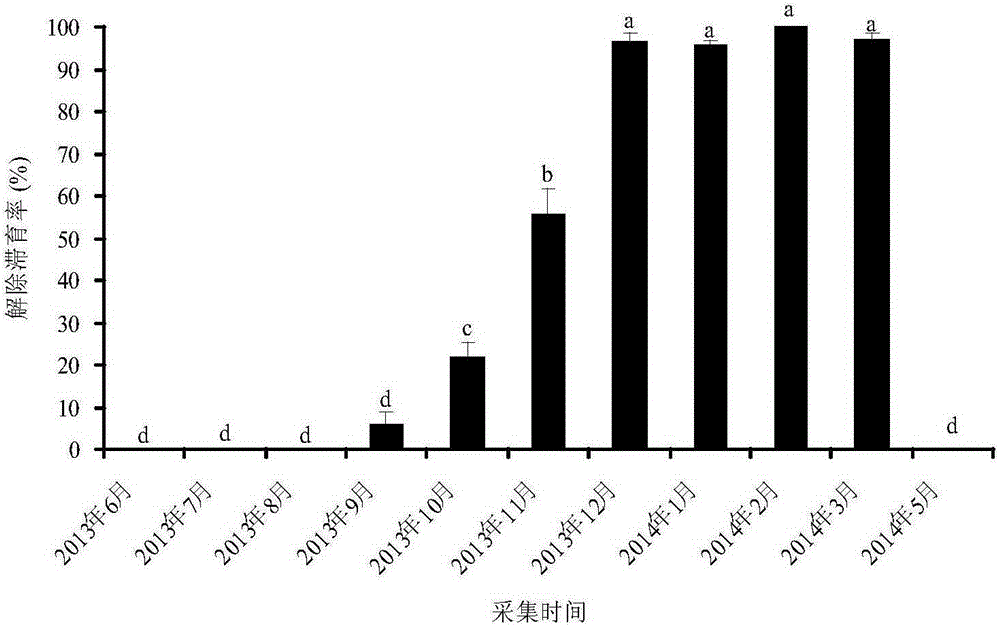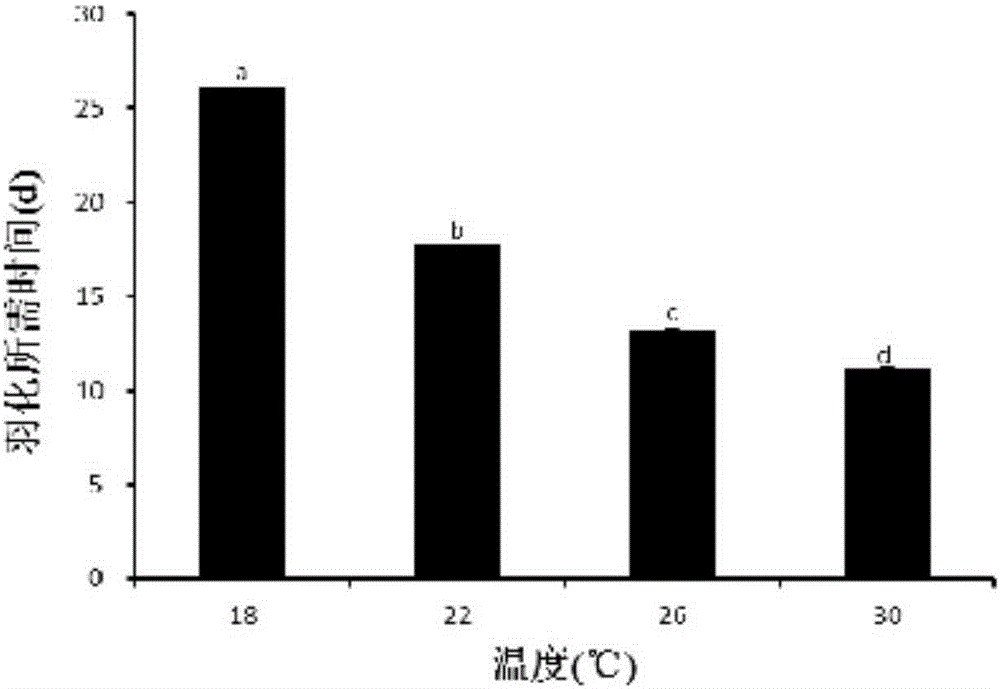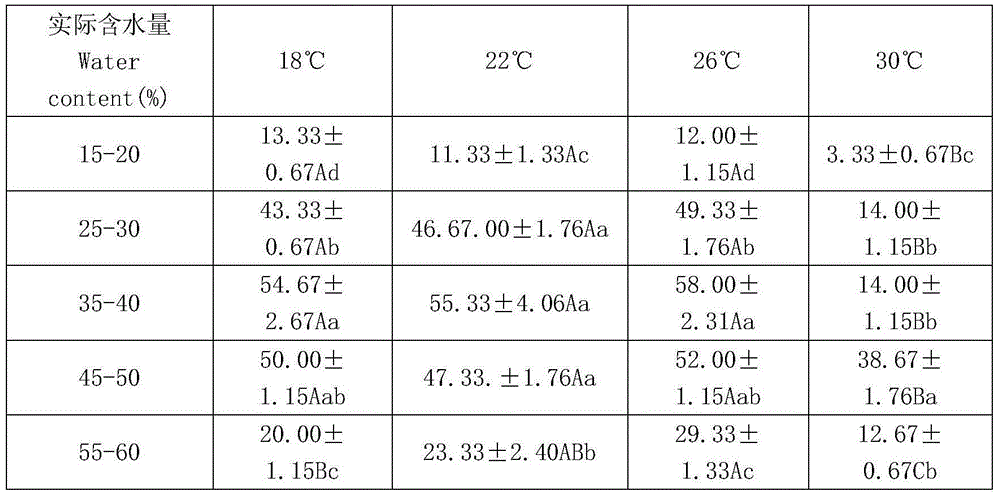Obtaining method of wheat blossom midge
A technology of wheat midge and acquisition method, which is applied in animal husbandry and other fields, can solve the problems of not considering the influence of diapause release, obtaining non-diapause insect state, and not studying the influence of temperature and soil moisture content development, etc., achieving simplicity and convenience The effect of efficiency and low cost
- Summary
- Abstract
- Description
- Claims
- Application Information
AI Technical Summary
Problems solved by technology
Method used
Image
Examples
Embodiment 1
[0018] From June 2013 to May 2014, an experiment on the effect of natural temperature change on the elimination of diapause of wheat midges was carried out. The specific steps are as follows:
[0019] (1) Establishment of insect nurseries: During the yellow ripening period of wheat in 2013, a large number of insect-susceptible wheat ears were collected from the re-infested areas of wheat midges in that year, and put into insect nurseries, so that mature larvae fell naturally and entered diapause. In order to prevent the death of insect sources caused by dry soil and high temperature, watering was irregular in summer, and the diapause larvae used in the experiment were all collected from the insect nursery.
[0020] (2) Collect soil containing diapause larvae of wheat midges: collect soil from the insect nursery respectively from June to late October, mid-November, December to early March and late May in 2014, with a depth of 20 cm. Put it into a woven bag and bring it back to ...
Embodiment 2
[0026] In January 2014, an experiment on the influence of temperature and soil moisture content on the elimination of diapause of wheat midges was carried out. The specific steps are as follows:
[0027] (1) Prepare soil with an absolute moisture content of 20%, 30%, 40%, 50% and 60% respectively, and ensure that the soil does not contain midges, and put them into flowerpots.
[0028] (2) collect the soil containing the overwintering diapause larvae of wheat midges from the insect nursery in embodiment 1, scour the soil to obtain diapause round cocoons, put into step (1) respectively the flowerpots with different water content soils in every 100, Put the round cocoons at a distance of 3cm from the surface, and then place the flower pots in an artificial climate chamber with a temperature of 18°C, 22°C, 26°C and 30°C, a relative humidity of 70±5%, and a photoperiod of 16L:8D. Each treatment is repeated 3 times.
[0029] (3) Eclosion observation and calculation: regularly obser...
PUM
 Login to View More
Login to View More Abstract
Description
Claims
Application Information
 Login to View More
Login to View More - R&D
- Intellectual Property
- Life Sciences
- Materials
- Tech Scout
- Unparalleled Data Quality
- Higher Quality Content
- 60% Fewer Hallucinations
Browse by: Latest US Patents, China's latest patents, Technical Efficacy Thesaurus, Application Domain, Technology Topic, Popular Technical Reports.
© 2025 PatSnap. All rights reserved.Legal|Privacy policy|Modern Slavery Act Transparency Statement|Sitemap|About US| Contact US: help@patsnap.com



